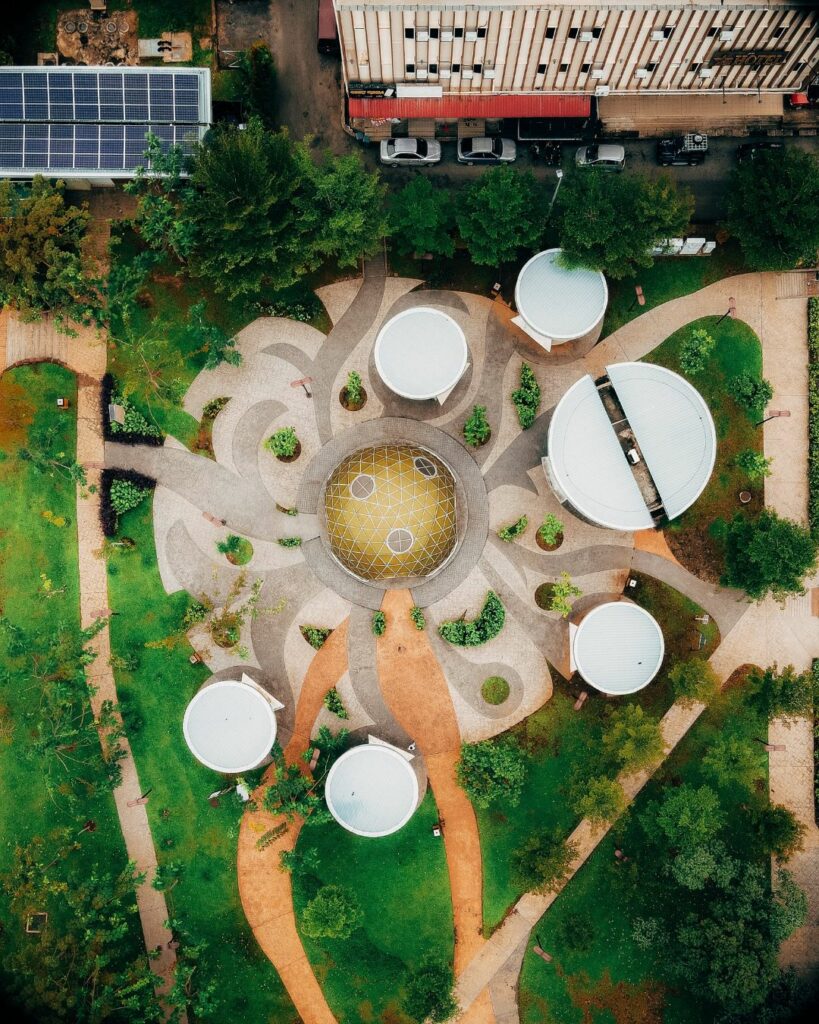Americans Are Spending More Time Indoors Than Ever. Here’s How You Can Use Nature And The Outdoors As A Way To Support Your Personal Wellness
By Sara Plett, LLCo Force Multiplier
s
As our world becomes more urbanized and many of us find ourselves in predominantly sedentary jobs, it’s vital that we make a deliberate effort to spend time in nature and the outdoors. This is not just for our physical health but also for our mental well-being. Here’s the science behind how connecting with nature can play a significant role in supporting your personal wellness.
s

s
The United States is currently experiencing a significant shift toward urbanization, with approximately 50% of the population residing in urban areas, and this figure is expected to rise to 70% by 2050. This transition, coupled with factors such as increased resource consumption and lifestyle changes, has contributed to a reduced connection between individuals and the natural world in many societies. This societal shift is taking a toll on personal wellness, with urbanization being linked to higher rates of mental illness.
Adding to these challenges is the transformation of our work environments. A recent study highlights a notable decline in jobs that require moderate physical activity, which have dwindled from 50% of all jobs in 1960 to a mere 20% today. This means that a significant portion of the population no longer incorporates physical activity into their work routine. Furthermore, physical activity outside of the workplace is also on the decline, with studies estimating that a substantial percentage of adults are not engaging in regular physical activity. This study found that 51% of U.S. adults do not meet the minimum guidelines for aerobic physical activity, and 26% remain entirely inactive.
s

s
In examining urban planning, it becomes evident that the layout of our cities plays a pivotal role in limiting outdoor activities and exercise opportunities. Current city planning tends to prioritize automobile-centric transportation systems, with minimal consideration for pedestrians and cyclists. Today, only 2.8% of the U.S. population commutes to work on foot, compared to 9.9% in 1960, and only 0.5% arrives at work by bicycle. The convenience of driving often overshadows walking or cycling.
Safety concerns further deter individuals from walking or biking to work. The Insurance Institute for Highway Safety reports an 80% increase in pedestrian deaths since reaching their lowest point in 2009. Both the car-centric urban design and unsafe pedestrian conditions have resulted in what are referred to as low walkability areas.
s

This urban planning approach, characterized by a focus on cars and poor pedestrian safety, has significant repercussions on mental and physical health. In areas with low walkability, only 18% of residents are likely to meet physical activity guidelines, in contrast to the 37% of adults living in high walkability neighborhoods. The consequences of physical inactivity are wide-ranging, encompassing impaired functional capacities, increased disease risk, disability, premature mortality, and the associated societal and economic burdens.
To recap: it’s important to recognize that our modern daily lives are primarily sedentary, largely spent indoors, and the consequential impact on our collective mental and physical health is profound. Addressing this issue fundamentally requires structural changes and policy adjustments. However, even within this broader context, individuals can proactively contribute to their own well-being. Notably, scientific evidence underscores the potential of reconnecting with nature as a means to enhance the general wellness of both individuals and society as a whole.
s
Gardening / Playing in Dirt:

s
Did you know that scientists have unearthed a fascinating connection between a “friendly” soil bacteria M. vaccae and our brain’s well-being, akin to the effects of antidepressants? Through studies conducted on mice, researchers found that this bacterium has the ability to activate brain cells and prompt the production of serotonin. Antidepressants operate by elevating serotonin levels in specific brain regions, and it seems this soil-dwelling bacteria can elicit similar effects in mice. Dr. Chris Lowry, the lead author on this study, intriguingly suggests that these results “leave us pondering whether we should all spend a bit more time embracing the therapeutic benefits of soil.”
A second study, comprehensive meta-analysis, sheds light on the profound positive impact of gardening on health outcomes. It unequivocally points to the salutary effects of gardening on well-being. Engaging in gardening enhances life satisfaction, vigor, psychological well-being, positive emotional states, a sense of community, and cognitive function while concurrently reducing stress, anger, fatigue, as well as symptoms of depression and anxiety. This research underscores the idea that indulging in a regular dose of gardening can be a prescription for improved health.
a

s
These two studies underscore the potential for significant improvements in your mental well-being through the simple act of getting your hands dirty in the soil. The exciting part is that creating a small garden has become more accessible than ever, with even those living in apartments innovating ways to cultivate their own green spaces.
s
Swimming in a cold body of water:

s
Recent studies have shed light on the potential beneficial impact of immersing oneself in cold water, whether through swimming or cold showers, on both mental and physical well-being. In a study involving open water swimmers, participants experienced an acute reduction in negative mood states, including depression, alongside an increase in positive mood during ocean swimming sessions. Furthermore, over the course of the 10-week program, swimmers exhibited a sustained reduction in negative mood, while their positive mood levels remained consistently moderate to high, meaning that the cold-water swimming had a long-term positive effect on their mental health.
Another study provided preliminary evidence that gradually transitioning to colder showers can have antidepressant effects. The research argued that exposure to cold water triggers the sympathetic nervous system, leading to increased blood levels of beta-endorphin and noradrenaline, as well as greater synaptic release of noradrenaline in the brain. Additionally, the abundance of cold receptors in the skin during a cold shower is believed to send a substantial number of electrical impulses from peripheral nerve endings to the brain, potentially resulting in an anti-depressive effect.
s

s
Critics have noted that mental health benefits of cold water swimming are often observed in group settings, leaving some uncertainty regarding whether it’s the social interaction or the act of swimming itself that primarily contributes to the observed antidepressant effects. Either way, it seems that cold-water swimming is a great option for those looking to better their mental health.
s
Hiking and wellness:

s
Another popular way to immerse oneself in nature is through hiking. Hiking can be an inexpensive way to enjoy nature and physical activity. The benefits of spending time in nature are multifaceted: active participation in physical exercise, emotional and mental rejuvenation, and the cultivation of social connections. These advantages may manifest immediately with lowered blood pressure, reduced stress levels, enhanced immune system functioning, improved attention, reduced depression, and overall well-being.
Many studies have researched the impact of hiking on personal well being. One study focused on rumination, a recognized risk factor for mental illness, revealing that individuals who embarked on a 90-minute walk in a natural setting reported diminished levels of rumination and displayed reduced neural activity in a brain region associated with the risk of mental illness.
s

s
Another study emphasized that outdoor exercise in natural surroundings often encourages longer and more intense physical activity. It found that hiking and walking not only yield positive impacts on mental health but also benefit physical well-being. The U.S. Department of Health and Human Services supports this idea and writes that even just 30 minutes of brisk walking on five days each week can significantly reduce the risk of heart-related health issues.
Furthermore, a study conducted in Michigan demonstrated the noticeable cognitive benefits of walking. Participants who engaged in a 50 to 55-minute walk in an arboretum environment notably improved their test scores compared to those in an urban setting. The authors of the study contend that brief interactions with nature can lead to marked increases in cognitive control.
A comprehensive “walking to health” study corroborated the positive impacts of walking on health. It concluded that walking has a preventive effect on heart attacks and reduces total mortality rates. Additionally, it plays a role in the treatment of hypertension, intermittent claudication, musculoskeletal disorders, and rehabilitation after a heart attack, as well as in the management of chronic respiratory diseases.
s

s
Finally, the American Hiking Society presents findings from 43 studies by The Centers for Disease Control, indicating that individuals who engage in regular exercise significantly reduce their risk of heart problems, while those who abstain from physical activity are twice as likely to develop coronary heart disease.
A quote from the Michigan study struck me, highlighting the vital role of nature: “To consider the availability of nature as merely an amenity fails to recognize the vital importance of nature in effective cognitive functioning.” These studies underscore the significant well-being benefits of outdoor interactions. To disregard the outdoors as an unnecessary amenity misinterprets the scientific findings.
s
Neighborhood Green Spaces and Wellness:

s
Even if you don’t reside near natural environments, scientific research reveals that spending time in urban green spaces can still profoundly enhance your mental health. This remarkable connection between green spaces and mental and physical well-being emerges prominently through a series of compelling studies.
One study investigating the effects of “greening” vacant land on mental health found that individuals living near greened vacant lots experienced a 62.8% reduction in self-reported poor mental health. In a separate study involving participants who walked past vacant lots before and after a greening remediation treatment, researchers measured their dynamic stress responses using ambulatory heart rate monitoring. The findings indicated that being in view of a greened vacant lot led to a significant reduction in heart rate when compared to those in view of non-greened vacant lots or with no vacant lot in view.
s

s
A third study researched the impact of neighborhood green space on residents’ mental health found that higher levels of neighborhood green space are linked to significantly lower levels of symptomology related to depression, anxiety, and stress. Another study, drawing data from over 10,000 individuals, revealed that those living in urban areas with more green space exhibit lower mental distress and a heightened sense of well-being. A final study investigating how green spaces benefit health found strong evidence supporting a positive association between greenness and physical activity, which can protect against adverse health outcomes such as cardiovascular disease.
Collectively, these studies underscore the vital role of nature and green spaces in enhancing mental and physical well-being.
s
Unequal Access To Nature and Green Spaces:

s
It is essential to recognize that some segments of the population have limited or no access to natural environments, which significantly impacts their well-being. According to a study on this issue in the U.S., Black, Latino, and Asian American communities often have less proximity to forests, streams, wetlands, and other natural areas. Families with children in these communities also face reduced access to nearby nature compared to the rest of the country. These disparities are exacerbated by the fact that individuals in these communities are more likely to reside in polluted areas with insufficient tree cover and outdoor spaces, making them more susceptible to immunocompromising illnesses.
Urban nature access and the inclusion of green spaces in the most economically disadvantaged neighborhoods can provide significant mental health benefits. In fact, experts estimate that each dollar invested in creating and maintaining park trails can yield nearly three dollars in healthcare savings.
The health and wellbeing of the communities that face unequal access to nature is equally important to those who can access nature easily. This unequal access to nature has tangible repercussions on their health and overall quality of life.
s
Working with Lindsey Litton Co

s
Recognizing that access to resources may not be equal, we proudly tailor our coaching sessions to each individual’s unique situation. At LLCo, we firmly believe in personalizing your coaching experience. Instead of adopting a “one size fits all” approach, we take the time to understand you and your specific needs. Through tools such as the DISC assessment, we identify your distinct leadership or work style, allowing us to approach your coaching sessions with your individuality in mind. If you’re curious about what a coaching journey with us could entail, don’t hesitate to reach out – simply click the link below to get in touch!
s
guest author Sara Plett


